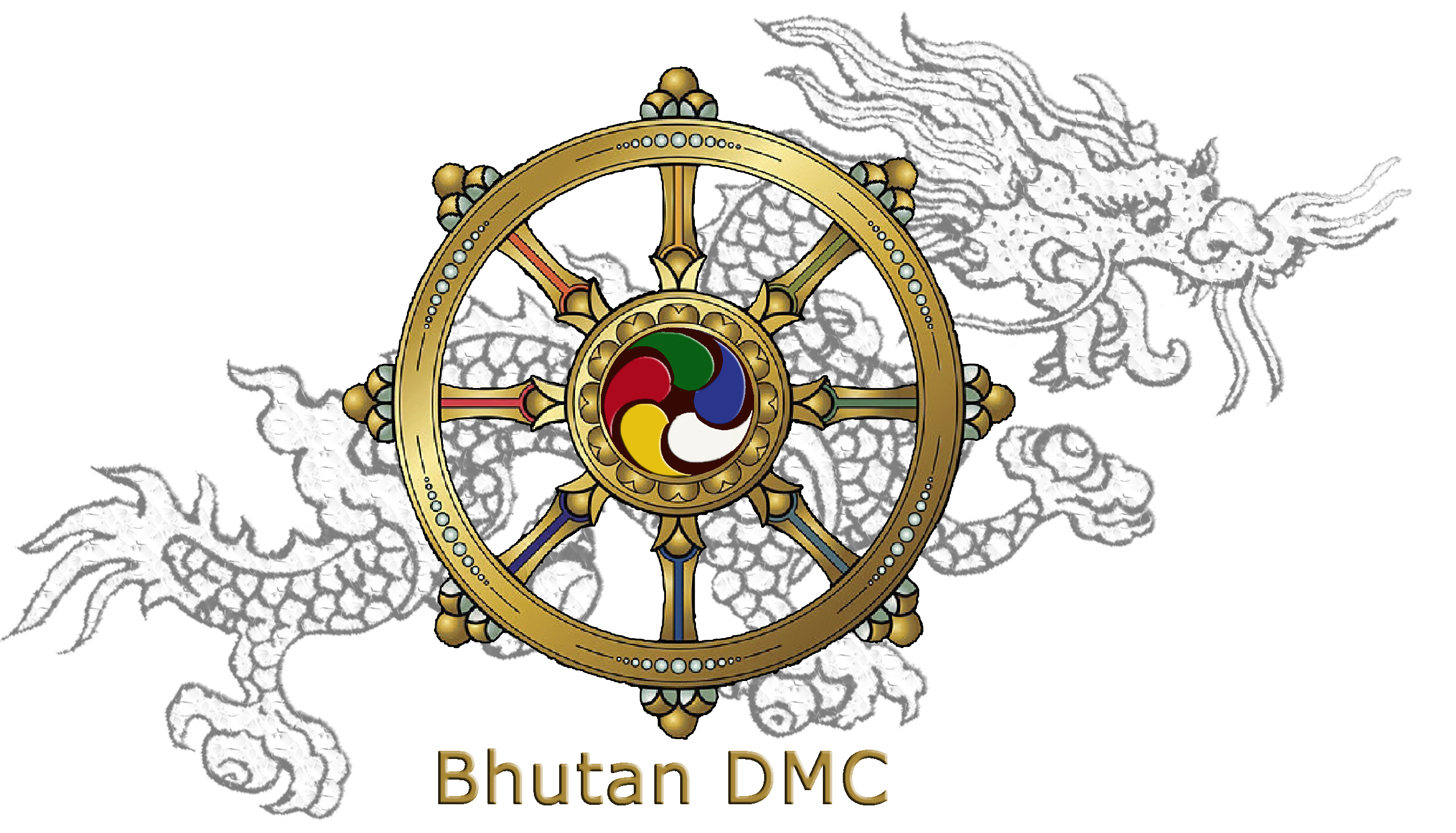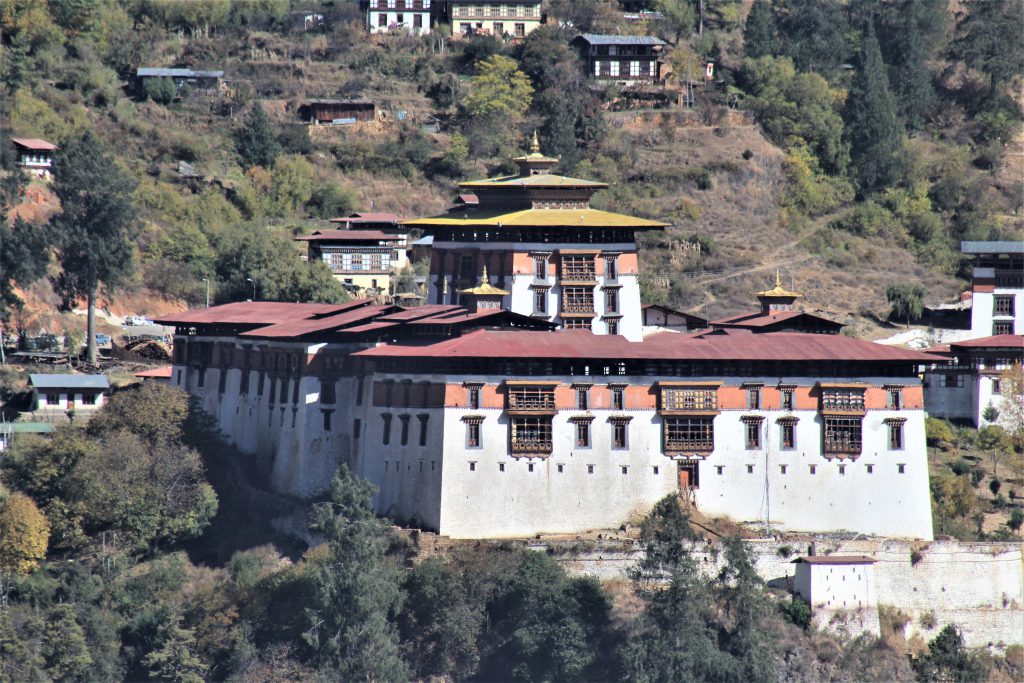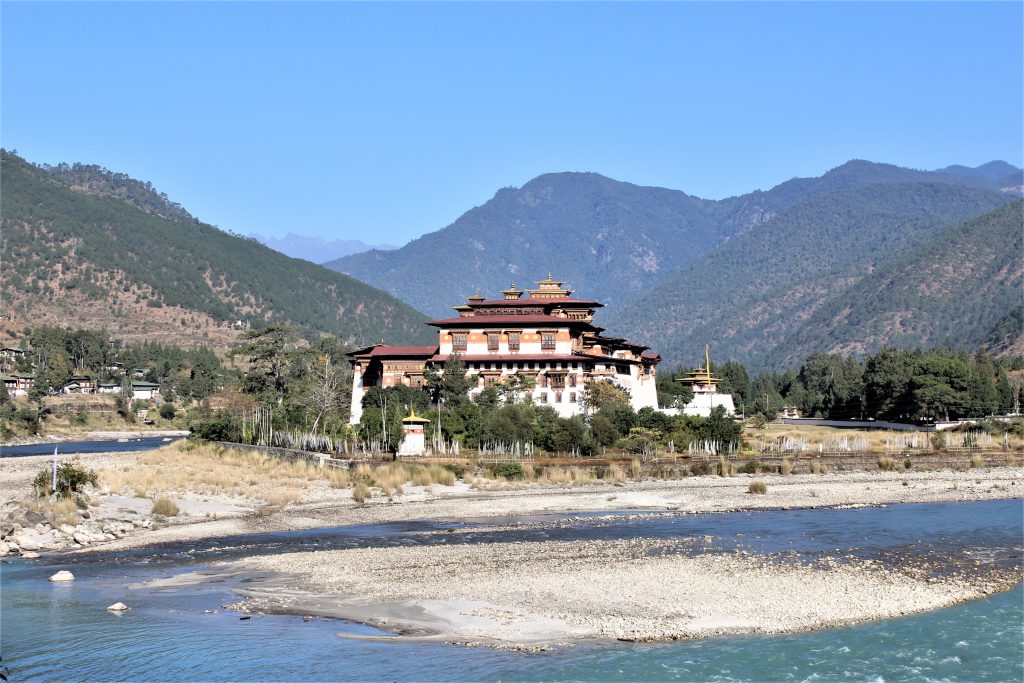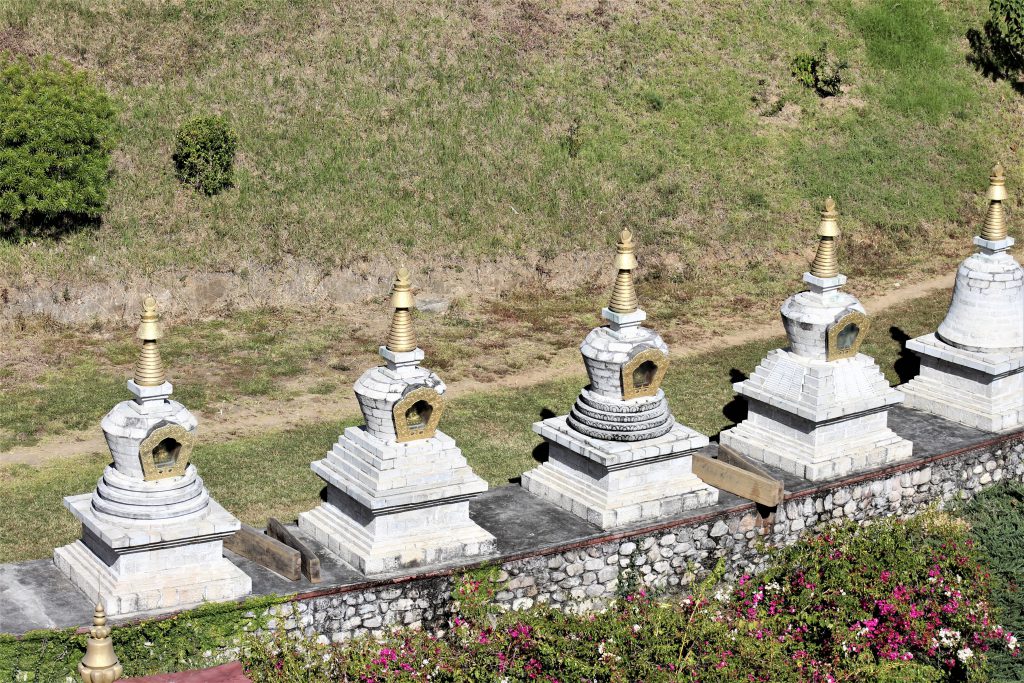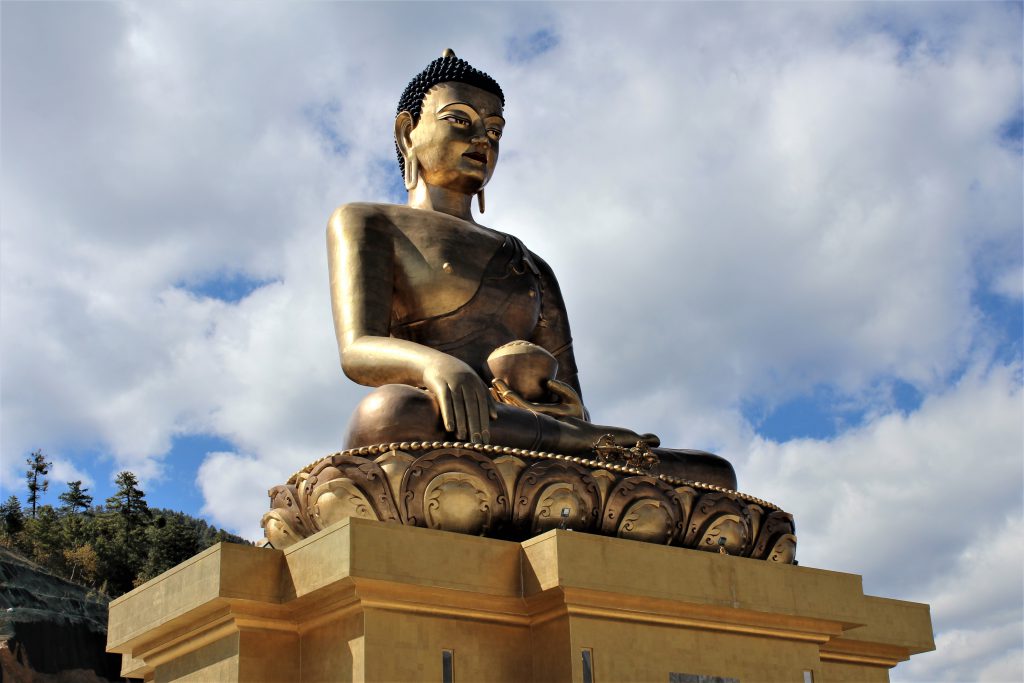The trip to Bhutan is indeed mesmerising; this country of rolling hills and towering crags certainly exudes charm. The mountains are magnificent, the forests are dense, the people are delightful, the air is pure, the architecture inspiring, the religion exciting and the art superb. This tour program is conveniently planned with entry & exit by road through southern Bhutanese town of Phuentsholing, located about 4 hours drive from nearest Indian airport, Bagdogra.
Day 1
Day 1- Arrival Phuentsholing
On arrival in Phuentsholing, met by our representative and after clearing immigration formalities, check in at the Hotel.
The frontier town of Phuentsholing is a thriving commercial centre, situated directly at the base of Himalayan foothills. Being the border town, Phuentsholing serves as the convenient entry/exit point for Bhutan and also the important link to visit the Indian state of West Bengal, Sikkim and Assam.
Later in the day if time permits visit Zangtho Pelri: Situated in city centre, this small temple represents the heaven of Guru Rinpoche.
Overnight at the hotel in Phuentsholing. (Altitude 300m)
Day 2
Day 2- Phuentsholing – Thimphu (150 km, approx 4.1/2 hours drive)
After breakfast, drive to Thimphu.
En route stop at Kharbandi Gompa, the beautiful monastery situated in garden of tropical plants and flowers. The monastery contains paintings depicting scenes from the life of Buddha and statues of Shabdrung Ngawang Namgyal and Guru Rimpoche. From the monastery garden there is a splendid view of Phuentsholing and plains of West Bengal and their tea gardens beyond.
Proceed further to Thimphu. This entire drive is very pleasant with numerous scenic spots en route.
Stop five miles before Thimphu to visit Simtokha Dzong, the place of profound tantric teaching, this dzong now houses a school for the study of the Dzongkha language.
On arrival, in Thimphu check-into the hotel. The capital town of Bhutan and the centre of government, religion and commerce, Thimphu is a unique city with unusual mixture of modern development alongside ancient traditions. With the population of about 1,00,000 it is perhaps still the world’s only capital city without a traffic light.
Evening an exploratory walk around Thimphu main street and market area.
Overnight at the hotel in Thimphu. (Altitude 2,320m)
Day 3
Day 3- Thimphu
After breakfast, drive to Buddha Dordenma, located atop a hill in Kuenselphodrang Nature Park and overlooks the Southern entrance to Thimphu Valley. The statue fulfils an ancient prophecy dating back to the 8th century A.D that was discovered by Terton Pema Lingpa (Religious Treasure Discoverer) and is said to emanate an aura of peace and happiness to the entire world. This massive statue of Shakyamuni made of bronze and is gilded in gold, measures 51.5 meters in height, making it one of the largest statues, in Bhutan. 125,000 smaller Buddha statues have been placed within the Buddha Dordenma statue, each of these also have been cast in bronze and gilded. The throne that the Buddha Dordenma sits upon is a large meditation hall.
Then, visit King’s Memorial Chorten continuously circumambulated by people, murmuring mantras and spinning their prayer wheels. Construction of this landmark was the idea of Bhutan’s third king, His Majesty Jigme Dorji Wangchuk (“the father of modern Bhutan”) who has wished to erect monument to world peace and prosperity. Completed in 1974 after his untimely death, it serves both as a memorial to the Late King and as a monument to peace.
Afternoon the visits include:
Textile Museum: is worth a visit to experience the living national art of weaving. Exhibitions introduce the major weaving techniques, styles of local dress and textiles made by women and men.
Folk Heritage Museum: The Museum is dedicated to connecting people with the rich Bhutanese Folk heritage and rural history through exhibits, demonstrations, educational programs and documentation of Bhutanese rural life.
Trashichhoedzong: This is the center of government and religion, site of monarch’s throne room and seat of Je Khenpo or Chief Abbot. Built in 1641 by the political and religious unifier of Bhutan, Shabdrung Ngawang Namgyal, it was reconstructed in 1960s in traditional Bhutanese manner, without nails or architectural plans.
Evening time can be spent strolling through Thimphu city centre and local crafts bazaar, to browse through example of Bhutan’s fine traditional arts. Here you can buy hand-woven textiles, thangkha paintings, masks, ceramics, slate and wood carvings, jewelry, interesting items made from local materials.
Overnight at the hotel in Thimphu. (Altitude 2,320 m)
Day 4
Day 4- Thimphu – Punakha & Wangdue (75 km, approx. 3 hours drive)
After breakfast, drive to Punakha across Dochu La. Located at a height of 3,088m/ 10,130 ft, Dochula is a scenic location with chorten, mani wall, and prayer flags which decorate this highest point on the road. If skies are clear, it may be possible to see the following peaks from this pass in the order left to right: Masagang (7,158m), Tsendagang (6,960m), Terigang (7,060m ), Jejegangphugang (7,158 m), Kangphugang (7,170 m ), Zongphugang (7, 060 m ), a table mountain that dominates the isolated region of Lunana – finally Gangkar puensum, the highest peak in Bhutan at 7,497m.
At Dochula pass, visit to Druk Wangyal Lhakhang (temple), built in honour of His Majesty the fourth Druk Gyalpo, Jigme Singye Wangchuck. The past and future appears to merge in the details of the temple and its structure tells the story of a supreme warrior figure, whose vision pierces the distant future in a fine blend of history and mythology.
On arrival in Punakha, check into the hotel.
Afternoon visit Punakha Dzong or (Palace of Great Happiness), built in 1637 by Shabdrung Ngawang Namgyal, at the junction of the Phochu and Mochu rivers. This majestic dzong served as both the religious and the administrative center of Bhutan in the past. It measures some 600 by 240 feet and has a six-story, gold-domed tower. Inside are courtyards and religious statuary that hint at the depth of history and spiritual tradition embodied here. Your guide will illuminate your understanding of this intricate culture that is exotic to us, though long established here.
Later in the day explore Wangdue town and its market.
Overnight at the hotel in Punakha. (Altitude 1,300m)
Day 5
Day 5- Punakha & Wangdue – Paro (125 kms, approx. 4.1/2-hour drive)
After breakfast drive back to Paro descending back down from Dochu La, follow the way back up the dramatic Wang Chhu and Paro Chhu river valleys, before crossing through Paro town towards the north end of the valley.
Later in the day after checking into hotel, proceed to visit Ta Dzong, originally built as Watchtower, which now houses National Museum. The extensive collection includes antique thangkha paintings, textiles, weapons & armour, household objects and a rich assortment of natural and historic artifacts.
Then walk down the trail to visit Rinpung Dzong, meaning (‘fortress of the heap of jewels’), which has a long and fascinating history. Along the wooden galleries lining the inner courtyard are fine wall paintings illustrating Buddhist lore such as four friends, the old man of long life, the wheel of life, scenes from the life of Milarepa, Mount. Sumeru and other cosmic Mandala.
Evening to explore Paro city centre.
Overnight at the hotel in Paro. (Altitude 2,280m)
Day 6
Day 6- Paro
After breakfast excursion to Taktshang Monastery (approx. 5 hours round trip walk). It is one of the most famous of Bhutan’s monasteries, perched on the side of a cliff 900m above the Paro valley floor. It is said that Guru Rinpoche arrived here on the back of a tigress and meditated at this monastery and hence it is called ‘Tiger’s Nest’. This site has been recognized as a most sacred place and visited by Shabdrung Ngawang Namgyal in 1646 and now visited by all Bhutanese at least once in their lifetime.
OR
After breakfast, driving excursion to Chelela pass.
Chele la (pass), at an elevation 3,988 meters is considered to be one of the highest motorable passes in Bhutan. About an hour’s drive along a thickly forested road, is this Pass-a botanical paradise. The pass provides stunning views of the sacred mountain Jomolhari and Jichu Drake. It is also marked by hundreds of prayer flags fluttering in the wind. During season, here visitors can see cascades of wild roses, purple and yellow primulas, and swathes of deep blue iris covering the forest floor. The top of the pass bloom with rhododendrons in a variety of colours-pale pink, deep pink, burnt orange, mauve, white and scarlet, in season.
Later en route excursion to Dzongdrakha Goempa. Often called as mini Takstang, Dzongdrakha is a cliff-side temple complex on the western side of the Paro Valley. Four shrines make up the complex, dedicated to Drolma (Tara), Tsheringma (Goddess of Longevity), Guru Rinpoche and the Buddha of the Future, Maitreya. Local oral tradition states that when Guru Rinpoche first came to Bhutan, he came from Nepal, first landing at Drakarpo, and then Dzongdrakha before arriving at Taktshang (Tiger’s Nest) farther north up the valley. Located approx 20-minute drive from Paro, these temples are built on a cliff above Bondey village, but the walk is not as strenuous as Taktshang. From the road, it takes only about 30 minutes’ walk to reach here. The Dzongdrakha village has numerous temples and is known for most of their men being either fully ordained monks or gomchens (lay monks who don’t take vows of celibacy). Ironically it is the women who work in the fields and are the bread earners unlike in any other part of the country.
Evening an exploratory walk around main street and market area.
Overnight at the hotel in Paro. (Altitude 2,280m)
Day 7
Day 7- Paro – Phuentsholing (150 km, approx. 4.1/2-hour drive)
After leisurely breakfast, visit the 7th century Kyichu Lhakhang, one of the 108 temples built in the Himalayas by Tibetan King, Songtsen Gampo. The building of this temple marks the introduction of Buddhism in Bhutan.
Later visit a traditional farmhouse. Picturesque farmhouses dot Paro valley amongst fields and hillsides and a visit to Farmhouse is very interesting and offers a good glimpse into the lifestyle of a farmer.
Then drive back to Phuentsholing. Evening explore Phunetsholing market and city centre.
Overnight at the hotel in Phuentsholing. (Altitude 300m)
Day 8
Day 8- Depart Phuentsholing
After breakfast, depart Phuentsholing for onward journey.
Image Gallery
